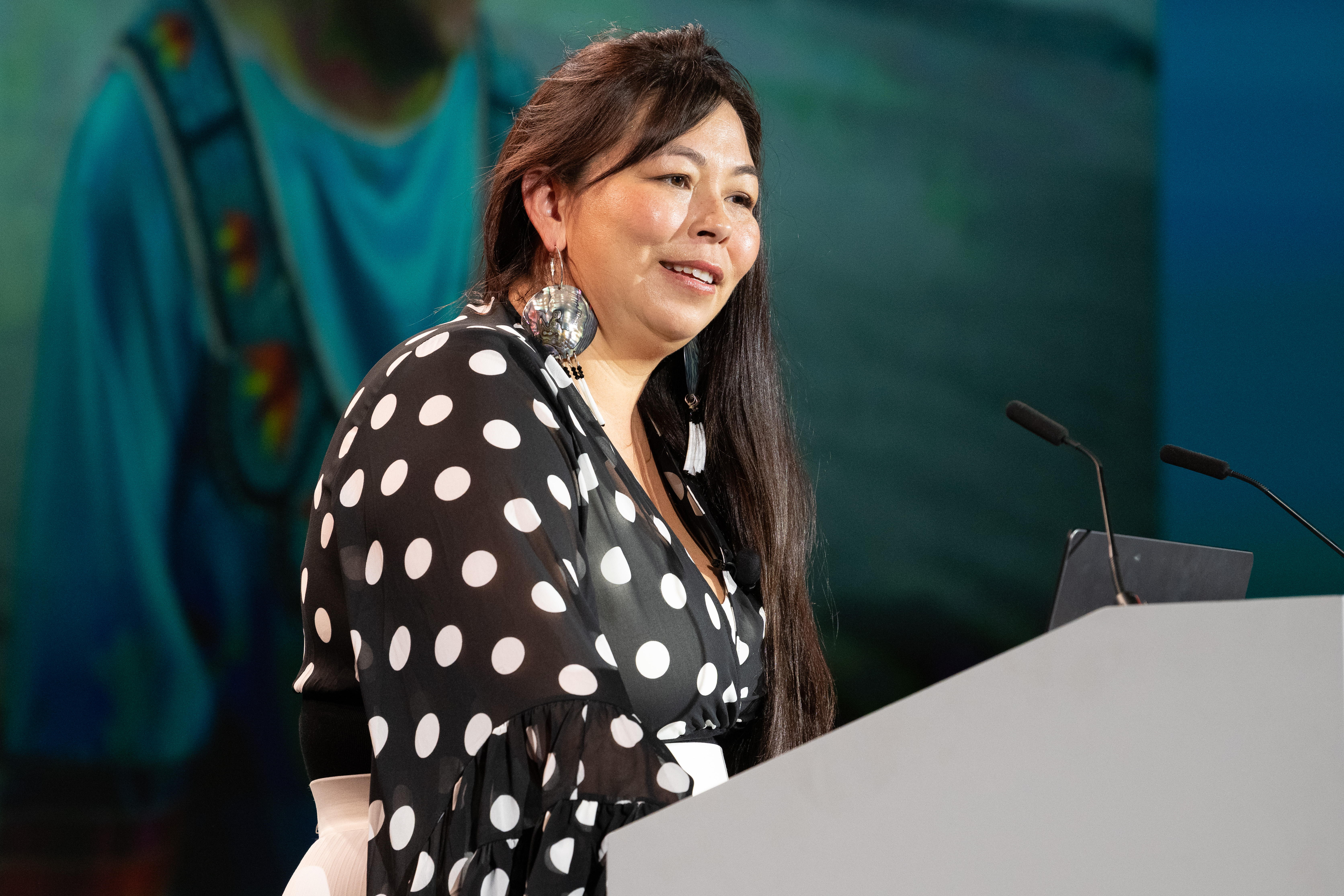
NASAI 2025
With Project 562, Matika Wilbur sparks visions for a Native future
“Sacred work deserves pizazz!” declared Matika Wilbur, sharing a personal philosophy for her art and advocacy of Native people. “Because education work is hard work. We need fun and high heels and glitter and laughter as much as possible.” She punctuated that vision with a rolling, resonant laugh.
Wilbur brought plenty of glittering energy to the opening stage of College Board’s 2025 Native American Student Advocacy Institute in Seattle, showcasing her yearslong effort to photograph residents of all 562 sovereign Native territories in the United States. “I sold everything in my apartment, I packed my bags, and I hit the great American open road,” she said. “The project has always been in pursuit of one goal—to change the way we see Native America. But also for myself, to change the way I see myself.”
NASAI brings together hundreds of educators, tribal leaders, and policymakers for exactly those kinds of big conversations about changing Native American education for the better. With sessions that range from career preparation in tribal schools to mental health practices informed by Native traditions, NASAI is a forum for K–12 and higher education advocates to meet and share ideas for strengthening opportunity in Indigenous communities.
Wilbur’s Project 562, an enormously ambitious effort to chronicle Native life in every part of America, offered a sweeping opening for this year’s conference. Logging hundreds of thousands of miles in a pair of RVs— “Big Girl,” who met an untimely end in a collision with an elk, and “Bougie Big Girl,” the fancier model that replaced the original—Wilbur created joyful, stately portraits of Native people in all of their modern diversity. From a Lumbee doctor in North Carolina to Native Alaskan fisherman to a scholar of Indian history in New Mexico, Wilbur’s travels revealed the many different ways that contemporary Native Americans are preserving their heritage while creating a rich future. It took nearly a decade of compiling stories and portraits before Wilbur published a book showcasing some of the people she’s met.
At NASAI, she described the long-running project as “fundamentally an effort to connect and create kinship.” She envisioned the book as a resource for educators and students, hoping to “create the opportunity for our children to pick up a book, thumb through, and have the opportunity to see ourselves radically, beautifully the way that we are.”
Wilbur noted that there have been major strides in Native representation in mainstream culture, citing the success of FX’s acclaimed Reservation Dogs, Deb Haaland’s term as U.S. Secretary of the Interior, and actress Lily Gladstone’s award-winning portrayal of an Osage woman in Killers of the Flower Moon. The novel Braiding Sweetgrass was a huge bestseller, Wilbur pointed out, “And it’s a book about Indigenous knowledge systems converging with science. Isn’t that beautiful?”
For all of that progress, there are still huge misunderstandings about the way Native people live today, Wilbur said. Decades of lazy and archaic stereotypes have led many people to assume that Native life is depleted, or relegated to desolate reservations, when the reality is that Native culture continues to thrive and evolve.
“I don’t think it will get better until Natives start telling those stories,” Wilbur said. “The way that Native people see ourselves affects the way we treat ourselves.” And helping Native students imagine a future for themselves and their culture should be an urgent priority for every community, she said.
Wilbur recounted the story of standing before her own tribal council—she hails from the Swinomish and Tulalip peoples of coastal Washington—and making a pitch to distribute copies of Project 562 to students enrolled in tribal schools. She was prepared for skepticism or pushback, but instead found straightforward enthusiasm for getting the book in the hands of Native young people. She described it as one of the most poignant moments of her life.
“We have to tell our students every day how much we value them,” Wilbur told the NASAI audience. “It is our job as educators, our number one job, to make sure that is the thing they know. We want them to know that they’re loved.”

Photographer and Storyteller Matika Wilbur shared her passion work: Project 562, an effort to visit and photograph all 562 indigenous and native tribes in the United States.

